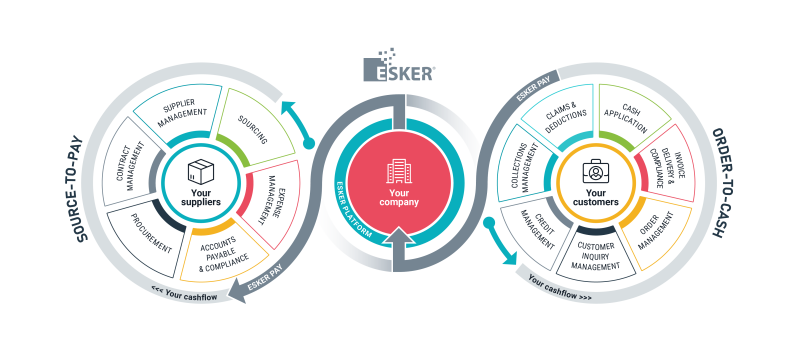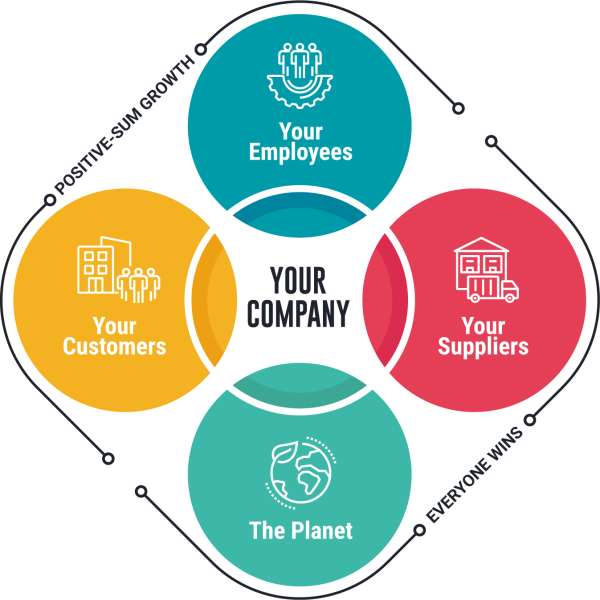Title
How Bank-Integrated Receivables & Payables Solutions Support Business Performance

Ever considered the benefits of automating all your company’s payments and collections in a single platform for more efficient processing? For accounts payable (AP), accounts receivable (AR) and treasury functions, AI-driven automation can help consolidate and harmonize these core processes to achieve new levels of efficiency and stronger cashflow.
What are integrated receivables and integrated payables
Within receivables management, treasury teams often grapple with disparate processes, formats and payments sources that all complicate the task of collecting payments and applying them in accounting. The existence of multiple sub-entities with separate banking structures can complicate the manual process even further.
Payables teams often encounter the same sort of challenges, with disparate platforms to approve and pay invoices, in environments that often rely on manual processes such as for supplier onboarding, invoice approvals and payment runs.
Based on a recent Gartner CIO survey, 49% of Banking and Investment CIOs indicated they will increase their automation investments.
These time-consuming processes that have traditionally been executed manually ...
Automation solutions such as Esker’s have long supported the digital transformation in these departments and support efficiency gains by allowing companies to drive value with:
Massive cost and time savings (up to $8.50 per invoice and 73% faster)
Dramatic reduction in errors (reduced up to 25%)
Optimization of cashflows (speed revenue up to 19%)
Benefits of automation for financial services and banking markets
Treasury services that businesses rely on to process payments and track their financial positions are central to both receivables and payables processes. The financial institutions that offer these treasury services increasingly leverage these overlaps to augment their value proposition.
By linking treasury services with digital workflows and tasks processing, companies can compound the productivity gain in their AR and AP departments.
AR and AP solutions and treasury services
To achieve the significant productivity gains needed in an evolving environment and to solve for the challenges they are faced with, be it in managing talent and keeping employees happy, improving customer and supplier relationships or optimizing working capital, companies need solutions to quickly process information and resurface insights on what’s happening within their departments.
For AR, this means getting invoices in the correct format, at the right place, at the right time to their customers. For AP, it’s enforcing strict controls and paying suppliers without losing efficiency and managing supplier relationships.
Cashflow visibility and performance underlie all these processes, but it’s also a factor of how payments are being managed and the related treasury services provided by financial institutions. This is where AP and AR automation solutions can help build the holistic vision of cashflow and forecasting that corporates so desperately need.
Integrated receivables and integrated payables are about compounding the benefits of AR and AP automation with the integration of treasury services. The benefits of these solutions can be measured by the time needed to undertake processes from approval to accounting close, reduction of errors and more implicit benefits such as customer/supplier relationships or the ability to leverage insights for cash and working capital management.
But the implications of these integrations go way beyond the product benefits and how it’s used by business customers:
- Scoping: making sure the automation system implemented adapts to the company's specific processes and target specific KPIs
- Delivery: having resources ready to implement the system and best leverage third-party integrations with banks and other providers
- Adoption: dedicated teams to support customers and partners in learning about the platform, how to adapt the dashboards, etc.
- Support and optimization: things change, everywhere, all the time; customer and partners need a provider that can be there to support customers and partners and make sure actions are taken along the way to keep maximizing the ROI from automation
And then, of course, the assurance of a vendor that will keep investing in the product development, enhancements and support to keep the solution most modern and continually adding value.
Enterprises across all industries are looking for new ways to improve both their AR and AP processes:
- An environment that allows for simpler customer/supplier relationships, increased visibility and levers to implement and adjust customer/supplier management strategies
- Offer portals where customers and suppliers can self-service and track/pay invoices in the method of their choice
- Dashboards and management tools that allow for granular views and decision-making
- Automate cash application of payments received, regardless of the payment method or financial channel
- Tools to optimize working capital with dynamic discounting, supply chain finance and terms management
- Optimize the work involved with collecting payments, improve revenue projections and visibility on processes, reduce the time spent to allocate payments and solve exceptions
In parallel, with cash becoming a main priority again, treasury departments are looking for increased visibility and levers to optimize working capital. The deep integrations of AP/AR automation and treasury services can deliver the insights needed by corporates to achieve their process improvement and financial planning objectives.
By helping AR, AP and Treasury teams, which work in silos at times, collaborate through one central platform, with consistent data and user interfaces, process automation solutions improve process efficiency, visibility and support working capital strategies.
Partners such as financial institutions can now achieve up to 43% overall efficiency improvement by augmenting their own suite of solutions through white-labeling or OEM’ing modern cloud platforms or specific process automation solutions like those offered by Esker. Financial institutions become one-stop-shop for cash infrastructure and cash optimization services.

The win-win benefits of Esker solutions embedded in treasury services
Both customers and financial institutions can benefit from deeper technology integrations:
- Integrate multiple billing/approval/payment processes into one, receive and send invoices electronically with access to a variety of payment options
- Automate reconciliation from payments received and reduce DSO, with instant sync to cash positions and recent payment activity
- Reduce time spent in preparing key business actions such as vendor payments, with pre-built payment runs and auto-payment of recurring, pre-approved expenses
- Support the adoption of novel payment methods such as virtual cards through easy-to-use and value-added payment features
- Optimize IT resources requirements with simpler implementations and pre-built, pre-tested connectors
- Capture insights from payables and receivables processing in dedicated dashboards that that can be leveraged by treasury teams in their decision-making — this can help implement strategies to reduce DSO, optimize DPO and gain greater clarity on cash forecasts
For financial institutions, it’s about augmenting the value proposition to customers with:
- The ability to serve their customers across their needs for deposit solutions, FX transfers, merchant processing and other transaction services
- Seamless integration of vendor payment methods, such as virtual card, that can be issued in real-time
- Support the relevancy of their treasury products and advisory, with rich insights and the opportunity to accompany customers in deeper relationships, such as with trade finance (e.g. invoice finance, supply chain finance)
- Ensure the technical integration of their products within the customer's technology stack, thereby ensuring smooth implementations and operations, with systems that can communicate efficiently
Having a specialist provider like Esker ensures support in technology, change management and making sure the objectives of the project are met with the proper technology.
Subscribe to new posts


